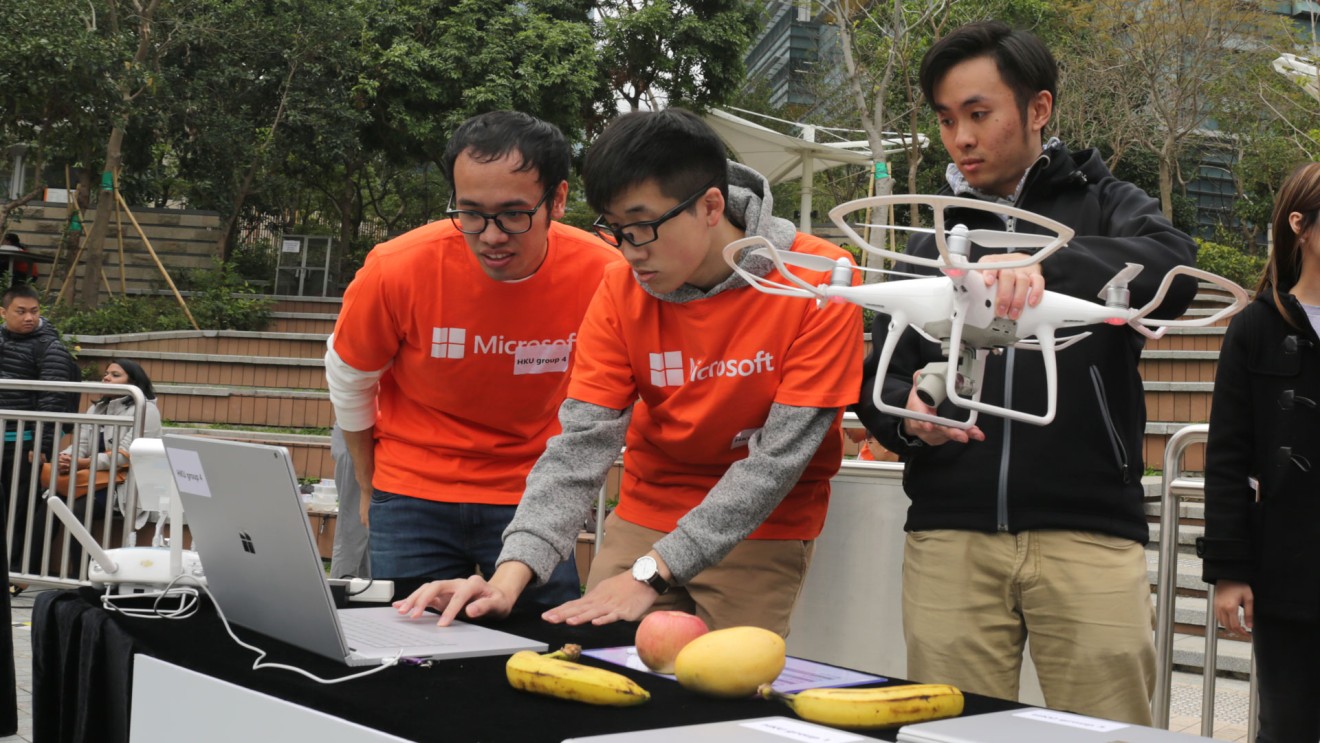
DJI and Microsoft are working on AI drones that can recognize objects
Project uses Phantom 4 Pro drones to spot fruit, training a new machine learning model
January 21, 2019: Updated the number of universities participating in the competition
This sounds easy. But it’s not for a drone, which needs to train its AI models on many, many pictures of apples: An apple in the shade, an apple in the sun, an apple from the front, from the back, from a frog’s perspective…
It might sound silly, but machine learning effectively learns the same way we do.
“For a baby to know that this is an apple, it can look at different kinds of pictures and recognize that this is an apple”, says Andy Kong, a research assistant at the University of Hong Kong.
At this point, you might have one big, burning question: Why are we teaching drones to recognize apples? Because it’s not about the apples, it’s about building a model for visual recognition that can be applied in other ways.
Microsoft and DJI say that drones powered with this technology can be used in a number of scenarios. If you own huge warehouse, drones can help reach areas inaccessible to workers and check stock. If you’re a real estate company you could easily inspect buildings for cracks, holes and rust.
The story of drone pioneer DJI
That’s why the two companies organized the AI x Drones Joint University Competition, gathering students from three Hong Kong universities to make AI models which help drones recognize different types of fruit.

The students then released their drones in areas with fruit scattered around, and left them to do their magic.
Screens displayed how successful their models were -- labeling the fruit, plus a number indicating how sure it is that the banana is indeed a banana.

The teams used a DJI Phantom 4 Pro, capable of shooting 4K ultra HD footage -- which Microsoft’s AI then scrutinizes to figure out what it’s seeing.
The secret weapon here? Edge computing. To put it simply, it’s about analyzing data close to its source (ie, sensors or cameras). That compares to what used to happen: The drone would send the footage to the cloud. Cloud computing is more powerful, sure, but the transmission time adds huge lag -- something which edge computing eliminates by handling the analysis on the drone itself.
“Once a drone detects something, it can send the message or the results back to the computer, and it will make the whole performance and user experience much better,” according to Winnie Chu, Business Group Lead, Cloud and Enterprise at Microsoft Hong Kong.
Check out DJI Phantom 4 Pro on Amazon

But we’re still a ways away from these AI drones being deployed for real. For starters, while there are a lot of theoretical uses, Chu says companies have yet to design useful tasks for AI drones. And for those of you worried that machines might take over our jobs (spotting bananas?), fear not… not yet, anyway. Kevin On, Global Marketing and Communications director of DJI, says they're more likely to augment humans than replace them.
“We see drones as empowering workers and becoming a new tool in the toolbox,” said On, adding that drones can reach high places which could be tricky for humans to reach.
And again, while the drones are being trained on fruit, the idea is that they’ll be able to spot more useful shapes -- which could save lives, as Andy Kong points out.
“If someone faints in the mountain and we need to search for that person, it’s easier to use a swarm of drones to search.”
For more insights into China tech, sign up for our tech newsletters, subscribe to our Inside China Tech podcast, and download the comprehensive 2019 China Internet Report. Also roam China Tech City, an award-winning interactive digital map at our sister site Abacus.

